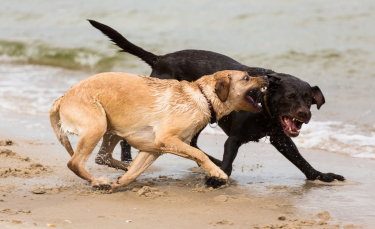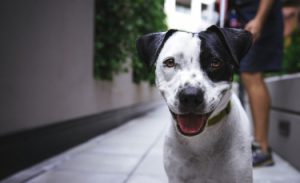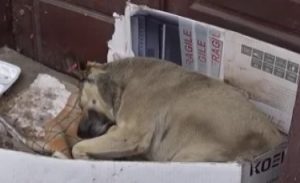
all breeds and types of dogs are classified according to the rural code. There are first-class, second-class and third-class dogs. But who are these dogs? What are their obligations? Let’s take a look at
,
summary
what kind of dog does my dog belong to? Obligations and prohibitions category I dogs: Category II dogs: behavior assessment and ability certification
our education of dogs largely determines their behavior. Any dog can be aggressive, even if it is small and belongs to a breed with no reputation for danger. However, the law stipulates the categories of dogs with certain risks and imposes restrictions and obligations on their holders. The main reference documents of
and
are Law No. 99-5 of January 6, 1999 (as amended) and Law No. 2008-582 of June 20, 2008. The first concerns dangerous and stray animals and the protection of animals. As for the 2008 law, it introduced very important new regulations.
what kind of dog does my dog belong to? Class I: attack dog. The morphological features of these dogs make them look like Staffordshire terriers, mastiffs and Tosas. These dogs are not included in the French Book of origin (LOF). It is important to emphasize that they are dogs, but not dogs. The second category: defensive dogs. This time, this category includes breed dogs (registered in LOF) and assimilatable dogs (types). These are Staffordshire terrier breeds registered in lof, Rottweiler registered or unregistered in lof (Rottweiler type), and Tosa registered in lof. Category 3: all other dogs. From Chihuahua to Belgian shepherd, they all belong to the third and last category.
should understand that this classification was established a few years ago. At that time, there may have been some problems related to Bulldogs or Rowe dogs (accidents, dog fighting…). At that time, legislators had to respond quickly and put forward a piece of legislation aimed at protecting the people. It is recognized that other breeds of dogs may belong to categories I and II, but so far, the legislation has not changed. The obligations and prohibitions of
category I dogs and the detention of
category I dogs are strictly limited. Minors, adults under guardianship, persons convicted of crimes or violence, and persons whose livestock have been confiscated are prohibited.
these dogs are not transferable, whether paid or unpaid. It is prohibited to import and bring into French territory. As soon as the dog leaves home, it should be tied to a belt and put on a mask. The use of public transport and public areas (areas other than public roads) is prohibited. The
legislation requires the holder to
Receive suggestions from woopets by registering for a newsletter. I register your email address collected by woopets, allowing you to receive our news and business offers. Learn more about identifying whether dogs are vaccinated against rabies (annually) and whether they are sterilized (certified by a veterinary certificate) Third party liability insurance shall be taken out for first-class dogs, and the behavior of first-class dogs shall be evaluated by a behavior veterinarian approved by the competent authority. Class II dogs:
the detention of class II dogs is lighter than that of class I dogs, butStill mandatory:
determines whether his dog is vaccinated against rabies (annually) Third party liability insurance shall be taken out for first-class dogs, and the behavior of first-class dogs shall be evaluated by a behavior veterinarian approved by the competent authority. The second category of
dogs can take public transport, but they must comply with the regulations, i.e. belts and masks. They can also be transferred free of charge or paid and imported into French territory (fulfilling administrative and health obligations). The
behavior assessment and ability prove that
has become a mandatory requirement for the detention of class I and class II dogs, These assessments help (if successful) obtain a detention permit. The purpose of the
behavioral assessment is to determine the potential risk level of the dog. It must be performed by an authorized veterinarian registered on the departmental veterinary assessment list. This list can usually be found on the Internet or at your city hall service.
during the evaluation consultation, the veterinarian will ask you questions and observe the dog’s response to different stimuli and situations. According to the response, experts will be able to classify the risk degree of dogs according to the following table:
level 1
have no special risks except the inherent risks of their species. There is no need to update.
level 2
has low risk for some people and some situations. The assessment will be updated within a maximum of 3 years.
level 3
serious risk. The assessment will be updated within 2 years.
level 4
is high risk, and the assessment must be updated within 1 year.
at the end of the evaluation, the veterinarian will issue a certificate to the dog owner and forward the investigation results to the city hall and I-CAD service department in the dog detention place (identification of domestic carnivores)
and
also read: burning of dogs after death
and
This is mandatory for category I and II dogs, and dogs that bite or are considered dangerous. This is final only when the dog is more than 8 months old at the time of assessment; otherwise, the veterinarian will issue a certificate Temporary, valid until the dog is 1 year old.
health certificate is about the owner of the dog. It is mandatory for all owners of first-class or second-class dogs and all owners of dogs that have bitten or are considered dangerous.
It is issued at the end of the training day (7 hours), during which the trainer will return to the basis of education, dog behavior and accident prevention… He must be included in the list of trainers approved by the public service department, which can be consulted in the city hall or county.
A copy of the certificate should be sent to the county where the animal lives.
Therefore, a detention permit can only be issued if the dog has undergone a satisfactory behavioral assessment and the dog owner has received his health certificate. The permit is issued by the city hall and is valid for both the dog and the owner










